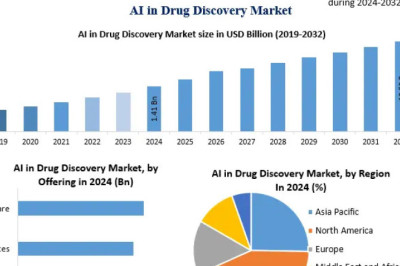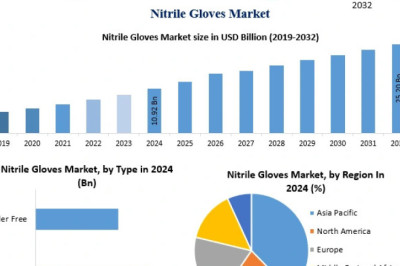views
PEPE vs SHIB: Which Meme Coin Has More Potential in 2025?
Meme coins have grown from internet jokes to powerful forces in the crypto world. In 2025, two of the biggest names in this category are Shiba Inu (SHIB) and PEPE Coin (PEPE). These tokens capture attention not just for their fun branding but also for their market potential, price swings, and vibrant communities.
This article offers a detailed comparison between PEPE and SHIB to help investors, meme coin traders, and newcomers make an informed decision. We'll explore each token’s origins, supply mechanics, price trends, utility, risks, and more.

Understanding the Origin Stories and Popularity Growth of Shiba Inu and PEPE Coin
The backstory of a meme coin often plays a key role in its community appeal and long-term survival. Let’s take a closer look at how SHIB and PEPE came to be, and what makes them resonate with crypto users around the world.
Shiba Inu (SHIB) was launched in August 2020 by an anonymous founder known as Ryoshi. It branded itself as a “Dogecoin killer,” hoping to ride the wave of meme coin popularity with a more structured plan. It quickly gained attention thanks to its massive total supply, low token price (which gave it the psychological appeal of affordability), and a passionate community that coined itself the “ShibArmy.” SHIB’s popularity spiked further when Ethereum co-founder Vitalik Buterin burned billions worth of SHIB tokens he received from the creators, effectively reducing the circulating supply.
PEPE Coin (PEPE) entered the market in April 2023, leveraging the long-standing cultural status of the Pepe the Frog meme. Unlike SHIB, PEPE had no whitepaper or official roadmap at launch. Instead, it thrived purely on meme culture and grassroots hype. It surged rapidly in price and popularity within just a few weeks, showing the power of community and viral marketing in the crypto world. Despite its informal origins, PEPE quickly earned listings on multiple major exchanges, drawing comparisons with earlier meme coin sensations like Dogecoin and SHIB.
While SHIB had more time to develop an ecosystem and fanbase, PEPE’s explosive start shows how quickly a meme coin can go from obscurity to top-tier status with enough internet momentum behind it.
Examining Token Supply, Burn Strategies, and Long-Term Inflation Control in SHIB and PEPE
Tokenomics plays a huge role in shaping how a coin behaves over time, influencing its scarcity, price potential, and perceived value. Here’s how SHIB and PEPE compare in their token structures and supply management.
Shiba Inu (SHIB) started with a maximum supply of 1 quadrillion tokens. At launch, 50% of the total supply was sent to Vitalik Buterin, who later burned most of it, effectively removing those tokens from circulation. Today, ongoing token burns happen through ecosystem activity, particularly on Shibarium, SHIB’s own Layer-2 blockchain. This ongoing deflationary mechanism is intended to slowly reduce circulating supply and potentially increase scarcity-driven value.
PEPE Coin (PEPE) launched with a total supply of 420.69 trillion tokens—a nod to meme culture. What’s notable is that over 93% of these tokens were burned or sent to a dead wallet almost immediately after launch. This made PEPE highly deflationary from day one. Its sharp burn rate was a deliberate move to build scarcity and confidence in a meme coin that otherwise had no formal utility or roadmap.
In terms of deflationary design, PEPE may appeal to investors looking for rapid scarcity-induced price jumps, while SHIB’s more gradual, ecosystem-driven burns might support sustainable long-term growth. Both models reflect different approaches to token economy design—one driven by immediate impact, the other by layered infrastructure.
Comparing Market Performance, Volatility, and SHIB Price Momentum in Recent Years
One of the most important aspects for investors is historical price performance and current market strength. Let’s explore how each coin has performed, including price trends, volatility, and market capitalization.
As of April 2025, Shiba Inu (SHIB) holds a market cap of approximately $12.5 billion. While it saw its largest explosion in value in late 2021, SHIB has managed to maintain relevance by continuously building its ecosystem and onboarding new holders. The SHIB price has shown a slower but more stable trend in recent years, with renewed interest from users staking SHIB on decentralized platforms and participating in ecosystem utilities like ShibaSwap and Shibarium. You can check the live SHIB price and trade directly on CoinW exchange.
In comparison, PEPE Coin (PEPE) has a current market cap of around $8.5 billion. PEPE experienced lightning-fast growth shortly after its 2023 launch, driven purely by speculative momentum. Its price history is marked by sudden spikes followed by sharp pullbacks, typical of newer meme coins. While the coin has captured the attention of speculative traders, its extreme volatility makes it a high-risk, high-reward asset.
For conservative investors, SHIB’s more stable chart might feel safer, especially given its backing through real utility. For adrenaline-seekers and swing traders, PEPE’s erratic performance may offer the excitement—and potential gains—they’re looking for.
Evaluating Ecosystem Development, Use Cases, and Real-World Functionality
What separates a long-lasting crypto project from a passing meme is often the ability to build something useful. SHIB has taken steps toward creating a real ecosystem. PEPE, on the other hand, is still heavily driven by internet culture.
Shiba Inu’s ecosystem is one of the most developed among meme coins. It includes:
-
Shibarium: A Layer-2 blockchain for fast and low-cost transactions, aiming to reduce congestion on Ethereum and increase SHIB’s utility.
-
ShibaSwap: A decentralized exchange (DEX) that supports SHIB and related tokens (BONE, LEASH), offering staking and liquidity farming.
-
Metaverse plans: SHIB has announced land sales and metaverse integrations for immersive experiences using their tokens.
PEPE Coin doesn’t yet offer any real-world utility or technical infrastructure. It’s best described as a pure community coin, where value is driven by attention, memes, and hype. While some unofficial NFTs and games have referenced PEPE, these are not part of a centralized or structured roadmap.
Ultimately, SHIB is transitioning into a functional DeFi token with long-term growth ambitions. PEPE, for now, remains a cultural statement more than a tech project.
Analyzing Investment Risks, Community Influence, and Future Projections
Meme coins inherently come with more risk than blue-chip cryptocurrencies like Bitcoin or Ethereum. Their price action is often tied more to hype and social media trends than to fundamental development. So how do PEPE and SHIB stack up in terms of risk?
Shiba Inu benefits from a more diversified risk profile:
-
Lower volatility than most meme coins
-
Actual product development and ongoing burn mechanisms
-
Support from major exchanges and active development team
PEPE Coin presents greater speculative upside, but also higher risk:
-
Heavy reliance on meme culture
-
No ecosystem to support dips or stabilize price
-
Risk of becoming a short-lived trend if interest fades
That said, PEPE also has an incredibly strong and active online community. The power of memes should not be underestimated—just ask Dogecoin investors from 2021. With enough attention and exchange support, even a meme coin without utility can reach multi-billion dollar caps.
For 2025, SHIB may be the safer bet for long-term holders, while PEPE remains a wild card for those with a higher risk appetite.
Conclusion
The debate between PEPE and SHIB reflects a broader tension in the crypto world—between community-driven hype and long-term utility development. While SHIB offers a growing DeFi ecosystem and gradual deflation, PEPE thrives on meme magic and volatility.
Which one has more potential? It depends on your investment style:
-
If you value utility, gradual growth, and ecosystem building, SHIB might be the better choice.
-
If you’re drawn to high-risk, high-reward trades with viral momentum, PEPE could deliver surprise gains.
Whichever you choose, remember: meme coins are fun, fast-moving, and unpredictable—so invest wisely and stay informed.











